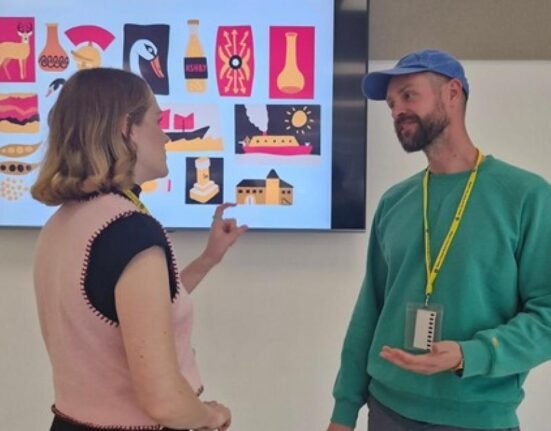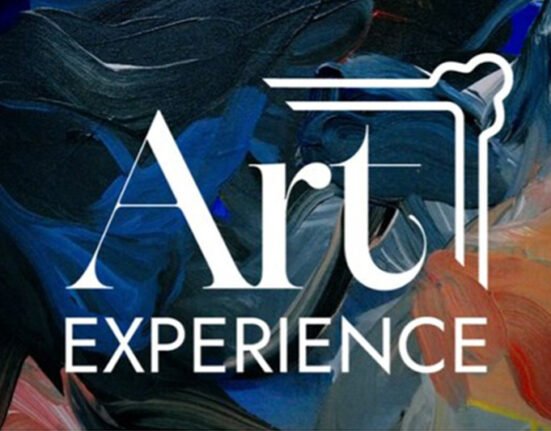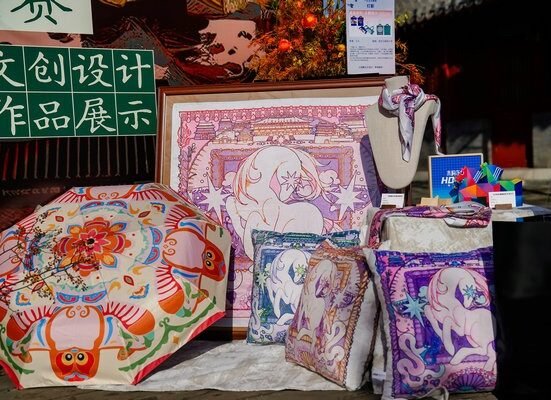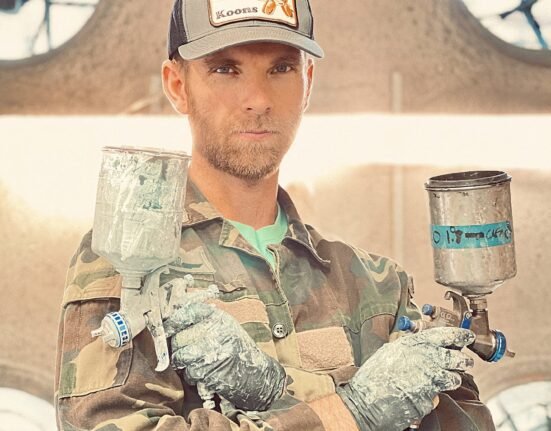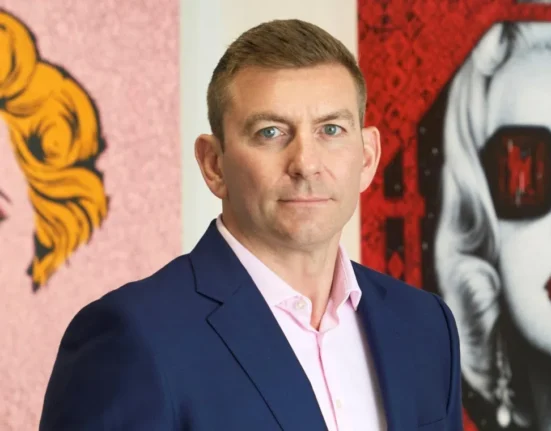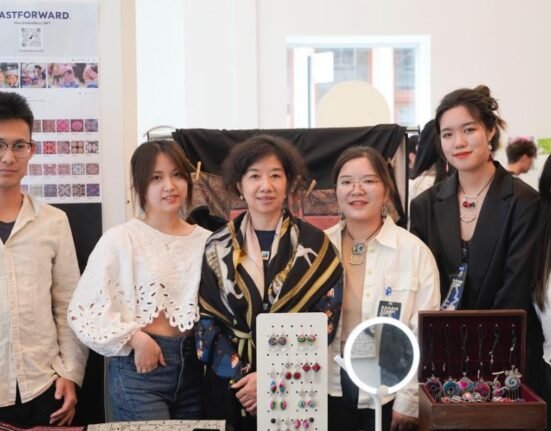Art, and cultural institutions more widely, has a unique power to engage people with these existential challenges, to create new imaginations of what that future might look like. For a public art museum to do this successfully requires some fundamental institutional transformation.
Everyone who works in the cultural landscape understands the power of art to transform society, but how might that be activated in a more visceral, widespread and society-changing way, particularly reaching people who might not think of themselves as ‘art’ people?
The Sainsbury Centre, an international art museum housed within a futuristic Norman Foster designed artscape in the Norfolk countryside, has attempted to carry out such a transformation.
Home to one of the best art collections in the UK, spanning four thousand years of human creativity, and to some of the greatest artists from Europe and around the world, in 2023 we became the first museum in the world to understand the collection as being alive.
The job of the museum
We understand that artworks are the living materialisation of humanity itself, and the job of the museum, from the board to every employee, is no longer to preserve, protect and communicate them as objects, but instead to give them their best lives as non-human beings.
We are dedicated to enabling visitors to form relationships with these works, much more like they would another person rather than an inanimate object. Delivering this changed mission has transformed everything about the museum and revolutionised how the art in our museum can change the lives of our visitors.
Often outliving their creators, artworks are an active portal to meet some of the most interesting individuals, political movements and cultural ideals that have existed in the world. Every visitor to our museum is given a series of practical ways to meet these artworks as living beings and to form an emotional relationship with them in unique ways.
Unlike human beings, you can trust art. You can share your innermost thoughts and concerns and find a safe space to explore all the possible answers. Perhaps the best definition of what makes great art ‘great’ is whether it has that undefinable power to captivate your attention and pay back the emotional investment you give to it.
In the physical and psychological space formed between you is created a personal world of intrigue, inspiration and ability to explore fundamental questions about your own life and the world around you.
The public gives life to artworks
Watching visitors in our galleries run their hand down the back of a Henry Moore sculpture while remembering the last time they were held in someone else’s arms; or lying down beneath Alberto Giacometti’s Diego Seated to tell the painting a secret they would never tell another human being; or stand trapped in a glass exhibition case, having written an object label for themselves, while stared upon by the eyes of a dozen artworks spanning two thousand years – reveals the true power of art.
These members of the public can’t help but project agency into the artworks. They give them life, and in doing so they think very differently about what that artwork can do for them.
In this world where art is alive, the last thing the art wants to do is answer questions about art. Instead, artworks want to help people answer fundamental questions about their own lives. No artwork was created with the intention it would one day be called impressionist or iron age and sit in an exhibition exploring the meaning of these terms.
The Sainsbury Centre doesn’t do shows on art, we do shows on life. The questions we ask come from the public who say, what we really want to know is: how are we going to save the planet? What is truth? How can we stop people killing each other? Why do we take drugs? Can the seas survive us?
As a result, over the last three years, we have allocated six months to each of these fundamental questions, activating art to help people find their own answers to them.
Disrupting the traditional museum structure
This not only requires disrupting traditional museum departmental structures, it also requires entirely new roles. The structure of our museum is best imagined as a Venn diagram of three interlocking spheres – equal part creative agency, media company and visitor attraction.
Some of the new roles include curators of art and climate change, of cultural empowerment, of living art and of trans-historical narratives. While everyone that works at the Sainsbury Centre is a museum professional at the top of their game, they work across the creative, productive and delivery realms in quite dynamic ways.
To give some examples of how this works in practice, let’s take our current question Can the Seas Survive Us? focused on climate change and the perilous state of the oceans.
The process started years ago with ‘think ins’ inviting leading artists, academics, charities, non-governmental organisations, environmental activists and arts professionals interested in this question to come to the Sainsbury Centre to share ideas of how we might activate art to help people address such a difficult question.
Because we have an ‘only pay if and what you want’ ticket policy, there are no pay walls between our range of temporary exhibitions spaces or permanent galleries. This means the ideas emerging from the ‘think-ins’ can be any size, scale or means of production – from individual commissions to 100sqm exhibitions, from a podcast idea to a film. The ‘think-ins’ highlight how art is process as much as production.
Living art approach
To help investigate Can the Seas Survive Us?, the idea emerged to charter a wooden tall ship and sail across the North Sea from Lowestoft to Rotterdam with a group of artists, curators, academics and activists to produce work en route and co-create content with colleagues interested in similar questions in the Netherlands.
This living art approach to helping society address fundamental challenges like climate change or drug use or global conflict is different from a traditional exhibition. Normally a museum exhibition is led by a curatorial specialist on a particular artist, movement or topic who researches, curates and communicates a new narrative in a digestible way. Because we aren’t doing exhibitions on art, where the question comes from art history, anthropology or archaeology, but exhibitions on real world questions, there is no one person who can ever be the specialist with the right answer.
Art, by definition, is the living materialisation of some of the most diverse, imaginative and totally contrary answers to any question. There is no right or wrong, there is just the undefinable essence of distilled imagination that makes humans special.
By creating a diverse and dynamic arts landscape, bringing art together from across the world and from throughout time, these living materialisations provide a museum for visitors to dwell within the question they want an answer to; be exposed to different cultural perspectives and imaginations; and choose the answer that speaks to them personally. The art that speaks to people is the art that helps them form their view of the world, that speaks to their own truth and formulates their own values.
In the case of climate change, it isn’t a scientific problem with a technological solution, it’s a societal problem with a human solution – and art is the heart of the human solution. So, if we are to ask how our species is going to save itself from destruction – our relationship with art is what will save us.


